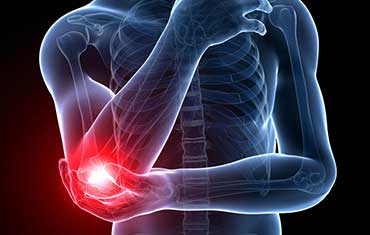ELBOW PAIN

Elbow pain is a common discomfort that can interfere with daily activities and range from mild to severe. It can stem from various causes, including overuse injuries, repetitive motions, or underlying medical conditions. Understanding the potential triggers and symptoms of elbow pain is crucial for effective management and relief.
One frequent cause of elbow pain is overuse or repetitive strain injuries, such as tennis elbow (lateral epicondylitis) or golfer’s elbow (medial epicondylitis). These conditions occur when repetitive movements strain the tendons in the elbow, leading to inflammation, pain, and tenderness on the outer or inner side of the elbow, respectively. Activities like playing tennis, golf, or typing for extended periods can contribute to these injuries.
Acute injuries, such as falls or direct blows to the elbow, can also cause pain and swelling. Fractures, dislocations, or sprains resulting from such incidents can lead to immediate pain and limited mobility. Additionally, conditions like bursitis, which involve inflammation of the bursa sacs around the elbow joint, can cause pain, swelling, and tenderness in the affected area.
Chronic conditions like arthritis or nerve compression syndromes, such as cubital tunnel syndrome, can also lead to elbow pain. Arthritis causes gradual deterioration of the joint cartilage, resulting in pain, stiffness, and reduced range of motion. Nerve compression syndromes occur when nerves in the elbow are compressed or irritated, leading to symptoms like pain, tingling, or numbness in the arm and hand.
Seeking medical evaluation is essential for diagnosing the underlying cause of elbow pain and determining the most appropriate treatment plan. Treatment may include rest, ice, physical therapy, medication, or, in severe cases, surgical intervention. By addressing the root cause of elbow pain, individuals can alleviate discomfort and regain optimal elbow function.
